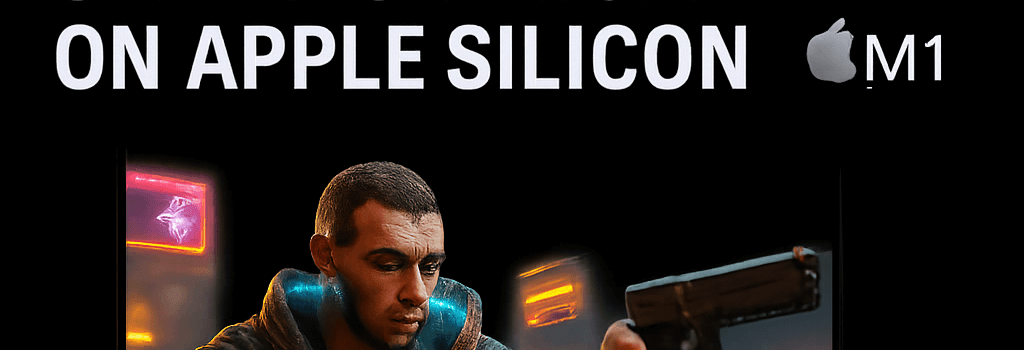Mac Graphics Presets Enhance Cyberpunk 2077 on Apple Silicon

CD Projekt Red’s Cyberpunk 2077: Ultimate Edition arrives on macOS this week, bringing the neon-soaked streets of Night City to Apple Silicon. By leveraging a finite set of hardware configurations and advanced upscaling technologies, the Mac port aims for console-level simplicity without sacrificing PC-class fidelity.
System Requirements and Installation Footprint
The macOS edition supports all Apple Silicon chips back to the original M1—provided you have at least 16 GB of unified memory. The 8 GB M1/M2/M3 base models simply lack the memory bus to handle the open-world textures, physics, and AI routines.
- macOS 15.5 or later
- Apple Silicon: M1 Pro/Max/Ultra, M2 Pro/Max, M3 Pro/Max, M4 Pro/Max
- 16 GB unified RAM minimum; 32 GB+ recommended for Ultra chips
- Storage: 92 GB (Steam/GOG/Epic), 159 GB (Mac App Store with all voiceovers)
“We optimized streaming and texture LODs to fit within a 200 GB footprint, while preserving ultra-high-res assets on Ultra models,” said a CD Projekt Red dev in a recent tech briefing.
Console-Style Presets Tailored to Your Mac
The hallmark feature is the “For this Mac” preset, a dynamic profile that auto-selects shader complexity, draw distances, and shadow resolution based on your SoC. Unlike the static Steam Deck preset, this adaptive preset queries:
- GPU core count and clock frequency
- Memory bandwidth (up to 800 GB/s on M3 Ultra, 1 TB/s on M4 Ultra)
- Dedicated ray-tracing cores (available on M3/M4 Pro and Max)
Ray tracing remains manual: you can enable hardware-accelerated RT on supported chips, but the auto-preset focuses on raster enhancements to maintain 30–60 fps at 1440×900 up to 4K.
Technical Insights into MetalFX and FSR Upscaling
To reconcile performance with visual fidelity, Cyberpunk 2077 on macOS supports both AMD’s FidelityFX Super Resolution (FSR) 2.2 and Apple’s proprietary MetalFX upscaling. Benchmarks show:
- FSR 2.2 using a 0.7× internal resolution yields +35% frame rate uplift with ~5% IQ loss on M2 Pro.
- MetalFX upscaling on M4 Max runs native 4K at 55 fps in the “High” preset with temporal anti-aliasing.
“MetalFX taps directly into our tile-based deferred renderer, minimizing draw calls and memory stalls,” explained an Apple graphics engineer in an interview.
Performance Benchmarks Across Mac Models
Independent benchmarks from Tech Insights Lab highlight:
- M1 Pro (16 GB): 30 fps @ 1440×900, High preset.
- M2 Max (32 GB): 45 fps @ 2560×1440, Medium preset with MetalFX.
- M3 Ultra (64 GB): 60 fps @ 4K, Ultra preset with FSR 2.2.
- Early M4 Pro silicon (beta): projected +20% GPU perf over M3 Pro.
All tests ran the v2.1.1 game patch, which introduced improved occlusion culling and asynchronous compute optimizations on macOS.
Developer Perspectives on Mac Porting
CD Projekt Red’s porting team collaborated with Apple’s Metal group to:
- Rearchitect the renderer for tile-based memory management.
- Integrate low-level GPU synchronization via MTLEvent APIs.
- Optimize storage streaming with APFS compression for NVMe.
“Having a limited hardware matrix let us deeply tune each preset. We reduced shader permutations by 40% compared to the Windows build,” said the lead Mac engineer.
Future of AAA Gaming on macOS
With MetalFX maturing and Apple’s move toward unified memory architectures, AAA titles like Cyberpunk 2077 demonstrate the viability of macOS as a gaming platform. Upcoming WWDC rumors hint at a new M4 Pro launch with 24 CPU cores and up to 48 GPU cores—potentially boosting real-time ray tracing by another 30%.
As studios embrace console-style simplicity on Mac, players can expect more native ports that leverage the synergy between hardware homogeneity and optimized software stacks.